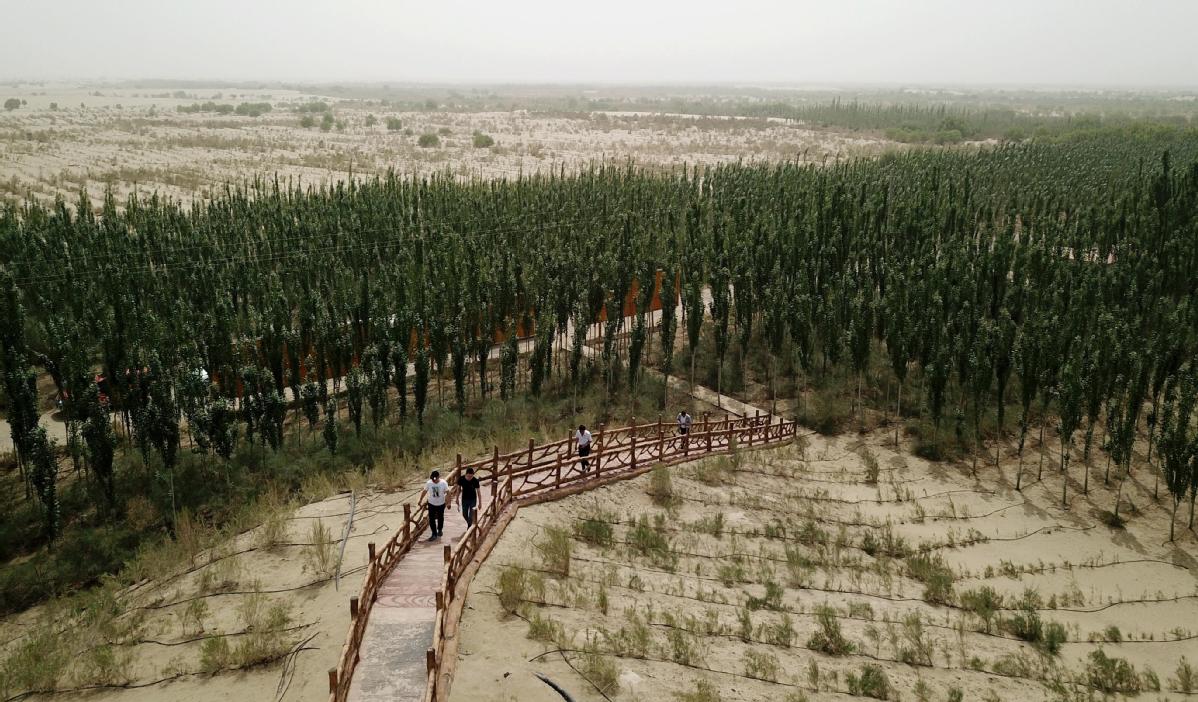Forests answer carbon capture call
China aims to increase its volume of forest stock by 1.4 billion cubic meters in the next five years, enough to absorb 2.56 billion tons of carbon dioxide, forestry authorities said on Thursday.
China aims to increase its volume of forest stock by 1.4 billion cubic meters in the next five years, enough to absorb 2.56 billion tons of carbon dioxide, forestry authorities said on Thursday.

People walk across a bridge in the man-made woods in Makit county, Kashgar, Xinjiang Uygur autonomous region. [Photo/China Daily]
"China will continue to see steady growth of its forest coverage from 23 percent this year to 24.1 percent by 2025", Liu Dongsheng, deputy head of the National Forestry and Grassland Administration, told a news conference in Beijing.
Afforestation is part of the country's efforts to meet its upgraded international commitments to mitigate climate change, Liu said, adding that by 2025, China's forest stock volume is expected to reach 19 billion cubic meters.
Forest stock volume - the total volume of the stems of all living trees - is often used in forest resource management and planning and as a predictor of carbon-related variables and carbon stocks.
Every additional 100 million cubic meters of forest stock volume can absorb 183 million tons of carbon dioxide.
Some recent academic papers put China's forest carbon storage at about 9.2 billion tons, and Liu said it had been increasing by at least 200 million tons a year.
In the past five years, China has achieved significant results in terms of greening and natural resources protection.
Since 2016, 35.2 million hectares of trees have been planted and the vegetation coverage of grassland has increased to 55.7 percent. Moreover, about 700 nature reserves covering about 25 million hectares of land were added in the country's protection list.
Liu said recently released proposals for the 14th Five-Year Plan (2021-25) called for multiple measures to improve the environment and meet specific goals.
By 2025, grassland vegetation coverage is expected to hit 57 percent. About 55 percent of the country's wetland will be under protection and 60 percent of its sandy land will be under control, according to the administration.
The Ministry of Natural Resources is also speeding up the establishment of a national territory spatial planning system - a 15-year plan focusing on the country's use and protection of natural resources that prioritizes environmental protection.
Wang Hong, vice-minister of natural resources, said related regulations and management guidelines will be formulated.
"We will stick to the principles of prioritizing environmental protection and green development to promote sustainable development," he said.

